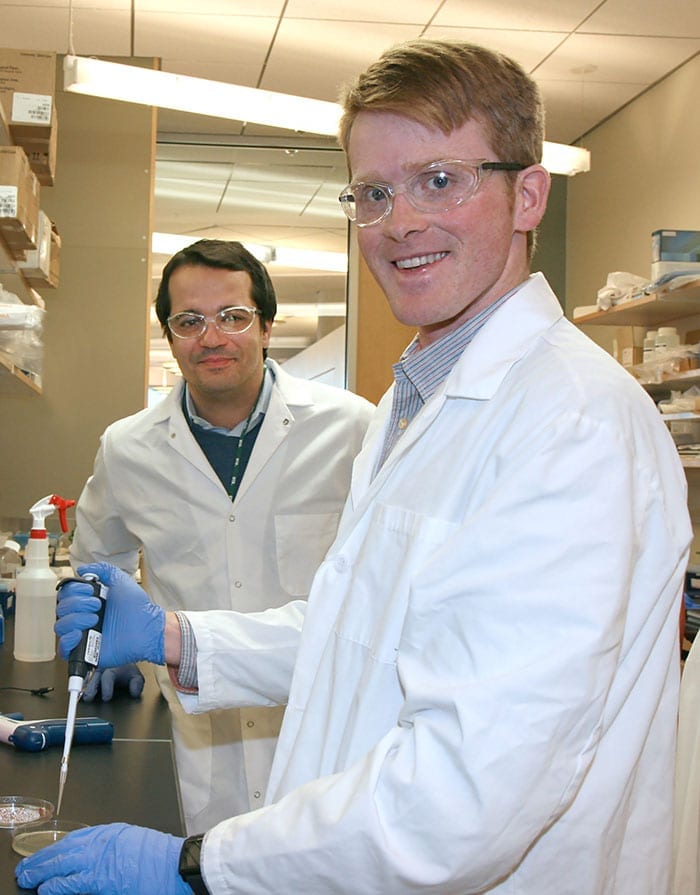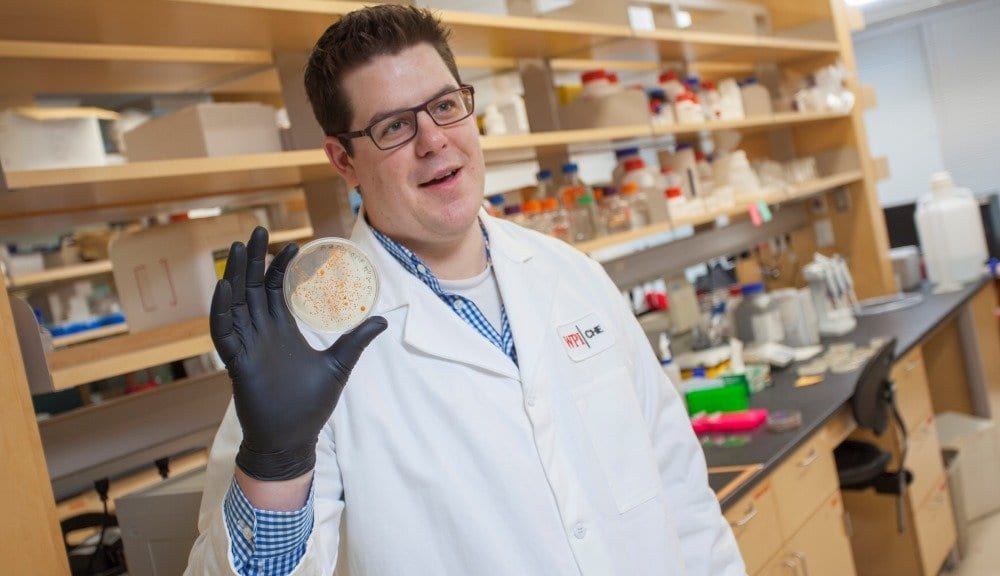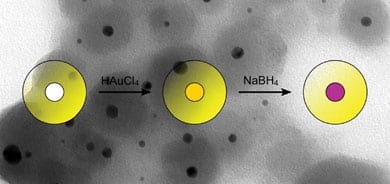
Bioengineers at The University of Texas at Dallas have created a novel gene-delivery system that shuttles a gene into a cell, but only for a temporary stay, providing a potential new gene-therapy strategy for treating disease.
The approach offers distinct advantages over other types of gene therapies under investigation, said Richard Taplin Moore MS’11, a doctoral student in bioengineering in the Erik Jonsson School of Engineering and Computer Science. He is lead author of a study describing the new technique in the Jan. 30 issue of the journal Nucleic Acids Research.
“In other gene therapy approaches, the therapeutic genetic messages being delivered can persist for a long time in the patient, potentially lasting for the patient’s entire lifetime,” Moore said. “This irreversibility is one reason gene therapies are so difficult to get approved.”
The UT Dallas study describes proof-of-concept experiments in which a gene carrying instructions for making a particular protein is ordered to self-destruct once the cell has “read” the instructions and made a certain quantity of the protein. In its experiments with isolated human kidney cells, the research team successfully delivered — and then destroyed — a test gene that makes a red fluorescent protein.
More research is needed to determine whether and how well the system might work in living organisms. But Moore said the ultimate goal is to refine the method to deliver genes that produce therapeutic proteins or drugs. The nature of the gene delivery system offers more control over how much protein the gene produces in cells or tissues. Because it does not alter the cell permanently, the method also sidesteps potential health problems that can occur if a gene is delivered to the wrong place in a cell’s genome.
“Our goal was to create a delivery system for therapeutic genes that would self-destruct, giving us more control over the delivered DNA by limiting the time it resides in cells,” Moore said.
Read more: Team Creates New Approach to Gene Therapy
The Latest on: Gene Therapy
[google_news title=”” keyword=”Gene Therapy” num_posts=”10″ blurb_length=”0″ show_thumb=”left”]
via Google News
The Latest on: Gene Therapy
- ASGCT 2024 Comes at Pivotal Time for Gene and Cell Therapy Sectoron May 5, 2024 at 9:06 pm
Jeffrey Chamberlain, president of the American Society of Gene & Cell Therapy, spoke with BioSpace about what we can expect to learn about in Baltimore this week.
- Samsung fund invests in US gene therapy firmon May 5, 2024 at 4:50 pm
SEOUL: Samsung Life Science Fund, an investment fund created by Samsung affiliates, will invest in Latus Bio, a US gene therapy development company, according to Samsung Bioepis.
- In Angina, Gene Therapy Coaxes Heart Vessel Growthon May 3, 2024 at 2:55 pm
The experimental new approach, delivered to the heart of those with angina after bypass surgery, showed evidence of restored blood flow 1 year later.
- Review: One-Shot Etranacogene Dezaparvovec Represents Game-Changing Gene Therapy for Hemophilia Bon May 3, 2024 at 11:58 am
More than 20 years of gene therapy clinical research have led to etranacogene dezaparvovec’s use in hemophilia B, according to authors of a recent review—and it takes its place in a line of current ...
- Drug watchdog criticizes Sarepta gene therapy approval, coston May 3, 2024 at 11:27 am
The chief medical officer of a drug pricing watchdog is warning against the FDA granting full approval to drugs that were previously granted accelerated approval if they then go on to fail ...
- Gene Therapy Allowing Heart to Grow New Blood Vessels Supported by Early Dataon May 3, 2024 at 8:13 am
XC001 is designed to transiently grow new blood vessels to restore blood flow in the heart. It contains alternative splicing of the three isoforms of VEGF-A, which sets it apart from past attempts at ...
- ICER casts doubt on Sarepta’s DMD gene therapyon May 3, 2024 at 6:15 am
The drug-pricing watchdogs over at the Institute for Clinical and Economic Review tend to be supportive of gene therapy pricing, even when the price is steep. That makes the doubt its casting on ...
- Gene therapy treatment increasing body's signal for new blood vessel growth shows promiseon May 2, 2024 at 8:16 am
Final 12-month data from the EXACT trial demonstrates safety and efficacy results for a vascular endothelial growth factor (VEGF) gene therapy treatment for patients who have advanced coronary artery ...
- What Lies Ahead? Shaping the Future of Cell and Gene Therapyon April 29, 2024 at 1:24 pm
Sponsored content brought to you by The launch of Revvity, Inc. in May 2023 signaled the rebranding of an 85-year-old company with a dedicated focus on the diagnostics and life sciences sector.
- Walgreens’ Next Frontier: Complex Conditions & Cell And Gene Therapyon April 29, 2024 at 4:31 am
Walgreens, one of the largest retail pharmacy companies in the world, announced last week that it plans to launch a variety of new services as a part of its newly integrated specialty pharmacy ...
via Bing News










